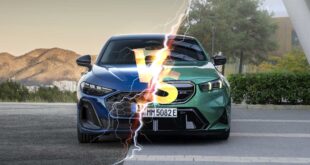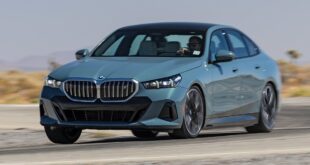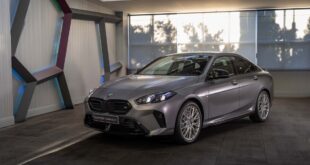The all-electric BMW i3 also proves its value as an emergency vehicle for police forces, rescue services and fire departments.
Munich. Powerful, agile, interconnected and, above all, locally emission-free: Thanks to these qualities, the all-electric BMW i3 is now also increasingly proving its worth as an emergency vehicle for police forces, rescue services and fire departments. BMW is offering the world’s first premium vehicle designed from the start for solely electric mobility, featuring a range of optional extras specifically aligned to the requirements of emergency forces, thereby opening up new fields of action for electric mobility within the urban environment. Authorities Bavaria, Milan, Los Angeles and London have meanwhile added the first BMW i3s to their emergency vehicle fleets. And another special version is in use for locally emission-free cash transport in the Polish capital of Warsaw.
The BMW i3 features a vehicle architecture that was specifically developed for electric and plug-in models. The key elements are the carbon fibre reinforced plastic (CFRP) passenger cabin and an aluminium chassis comprising all drive and suspension components. This construction method helps to provide the four-metre-long, five-door car not only with a remarkably spacious and variable interior, but also a small turning circle as well as agile and safe handling characteristics. A high seating position and excellent all-round visibility offer the ideal prerequisites for use in urban traffic conditions. The 125 kW/170 hp electric motor accelerates the standard BMW i3 (combined fuel consumption: 0.0 l/100 km; combined power consumption: 12.9 kWh/100 km; combined CO2 emissions: 0 g/km) from 0-100 km/h in just 7.2 seconds. The car’s lithium-ion high voltage battery permits a vehicle range of up to 160 kilometres in day-to-day operation.
The specific equipment featured in the BMW i3 is the result of more than 50 years of experience in the field of emergency vehicle development. Thus BMW is the only car manufacturer that is able to offer police, rescue and fire service task forces a range of equipment ex works that is exclusively aligned to each individual requirement. Depending on the area of use, the vehicles are provided with the corresponding design foils and roof bars. A special signalling system, front and rear flashers as well as pressure-chamber loudspeakers ensure that other road users are warned in good time when the BMW i3 is on an emergency assignment. The range of equipment also includes a preliminary setup for digital radio.
Moreover, thanks to a permanently installed SIM card, it is possible to make use of intelligent networking technology inside the BMW i3 to make work easier for emergency personnel. The ConnectedRescue system, which is based on BMW Connected Drive, offers the optional possibility of transmitting from the control centre to the vehicle all important information – including address, reason for assignment and contact person – clearly and intuitively operable and readable. The transmitted target coordinates or addresses can directly serve the navigation system’s route guidance, meaning that manual input of the navigation destination is no longer required. In this way, transmission errors are eliminated. The driver can concentrate fully on the traffic whilst the team prepares directly for the assignment. This enhances both safety and efficiency of rescue forces.
The BMW i3 is also conquering unusual business areas. The latest example is the Polish Idea Bank, which uses the BMW i3 in Warsaw for a pick-up service that is uncommon in the banking business. Shop owners are able to request via an app the BMW i3 in use as a security car to pay in their daily takings conveniently, directly and in front of their own shop door.
 BMW.SG | BMW Singapore Owners Community The Ultimate BMW Community – Established Since 2001
BMW.SG | BMW Singapore Owners Community The Ultimate BMW Community – Established Since 2001














